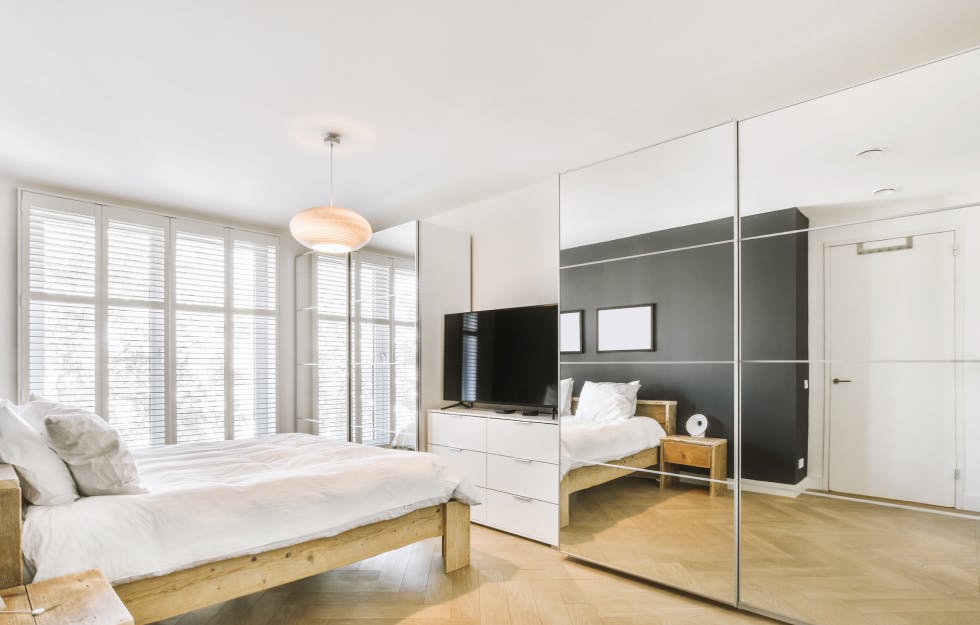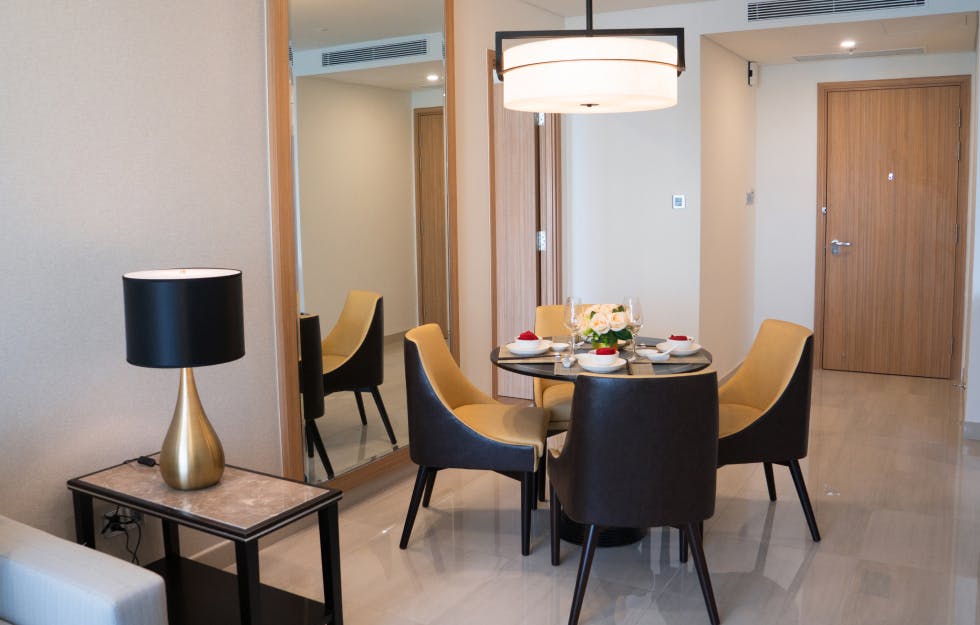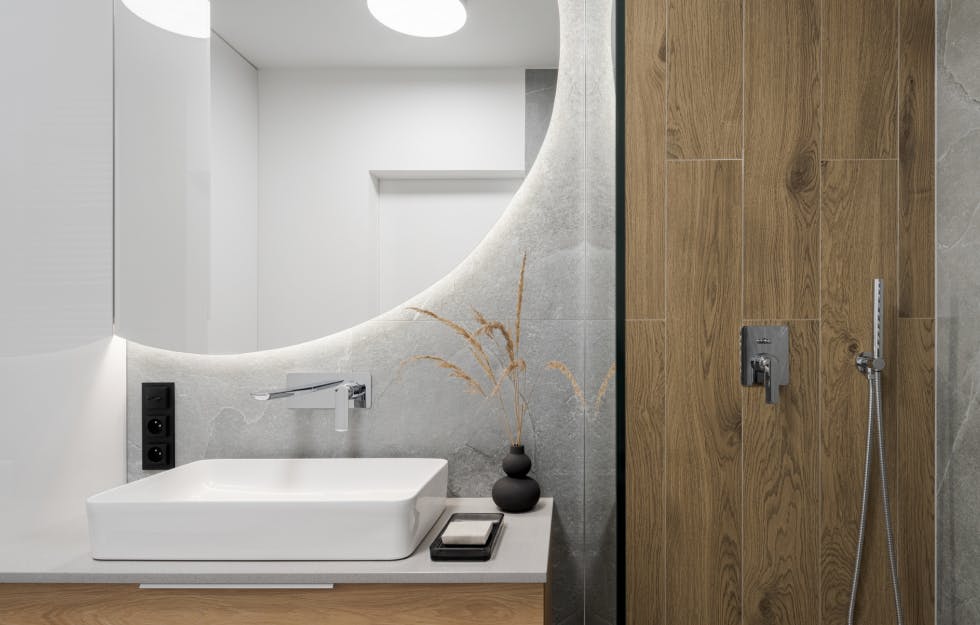Mirrors are useful for more than just making sure you look decent before you go out. They’re an interior designer’s secret weapon and can play a huge role in changing the atmosphere in a space.
You can use mirrors to add more depth to a space, increase the range of natural light entering your room, or even help to create a sleeker and more professional look. Whatever your design objectives are, you can definitely use mirrors to create a certain mood or impression. Here are 10 design tips to guide you when using mirrors in interior design:
1. Let There Be Light!
Say you want to brighten a room using natural light. You’re going to want to place a mirror next to or opposite a window. Now, make sure you position your mirror so the light hits just right. To get a nice, spread-out projection of light, go for a strategic angle that bounces light around the room.
Windows aren’t the only source of light you can take advantage of. Placing a mirror next to, behind, or above lamps can give you that extra illumination when you need it most. Just watch out for too much light bouncing around because when done right, this trick can work too well.
2. The More Mirrors, the Merrier
Hanging up a group of mirrors is bold, it makes a statement that keeps guests captivated. See if you can play around with different sizes and arrangements, get frames that complement or contrast each other; whatever it takes to highlight just how many mirrors there are.
For best results, place your mirrors where everyone can see them. They’ll draw so much attention that your visitors probably won’t notice much else in the room.

3. Stretch Your Space With Mirrors
You must’ve been in one of those elevators with mirrors all around. One of the things you will have noticed is how your reflection seems to go on forever in there. This happens because placing mirrors in small spaces can trick the mind into thinking a room is bigger than it actually is. Mirrors make it seem like there’s more of something, especially when you can see both the thing that the mirror reflects and the reflection itself.
4. Highlight Harmony By Hanging Mirrors
We’ve already covered how mirrors can shape perception. If you want to expose the sense of order in your space, you’d do well to arrange your mirrors in a pattern of some sort. Grouping your mirrors and arranging them in numerical or geometric patterns is really effective at underlining uniformity or agreement of elements in the space. If your design is informed by principles of correspondence or consistency, then you’ll want to place your mirrors in an orderly formation.

5. Explore Different Mirrors
Big mirrors do a great job of magnifying the open space in a room. Long mirrors and slim ones are perfect for making a narrow space look bigger. Big, wide, mirrors take up a lot of wall space, and although you’ve filled up your wall with a mirror; it’ll seem as though it’s empty. In fact, it’s almost like a window leading you to even more space; this is the nature of the optical illusion created by big mirrors.
If you’ve got straight lines, rectangles, squares, and the sort, you might want to get rounded mirrors just to offset all the sharp angles. Or you could keep with the straightforward shapes and lines to give off a more serious tone. It all depends on what you want to achieve.
Not enough space on the wall? Go for a slim, oval mirror. Curvier mirrors generally do better at squeezing into small spaces. Take into consideration the shape of your mirrors in relation to all the shapes and lines in the room.
6. Want Some Light? Watch The Height
Ideally, you should hang your mirrors low enough for people to see, but high enough to avoid anyone bumping into them. Eye-level is a good enough height to hang them, which should be about 60 inches from the floor.
Also, the closer your mirrors are, the cozier they are. If they’re way too distant, they won’t serve their purpose because nobody will be able to interact with them or really experience their presence.
You need to be conscious of the height of the mirrors not only as they relate to the floor, but to your dining table, couch, or whatever elements you have in the room.
Last, are your windows and mirrors at the same height? They better be, because you need to be harnessing as much natural light as you can. And if your mirror is much higher or lower than your windows, you’ll be missing out on a lot of light.

7. Mirror up The Entryway
Windows are good for letting light in to bounce off mirrors, but doors bring in even more light into a space. Hanging a few mirrors along the entryway gives guests a warm welcome. It is important, however, that your entryway mirrors reflect something pleasant. So, why not face them towards something inconspicuous yet dear to you, something you’d want to put the spotlight on such as a beautiful plant or a unique side table?
8. Mirror Your Way To A Centerpiece
Today’s solar power plants make use of hundreds of mirrors to reflect light to one focal point. You could use the same idea in your space, except instead of harvesting electricity; you’re harvesting brightness.
You could have one or more of your mirrors directed towards a centerpiece, or you could incorporate mirrors in that centerpiece. If you’ve got a mantel set up, you could place a mirror above it to highlight its beauty while expanding the sense of space.
9. Bring the Outdoors Inside
While your focus is interior design, it doesn’t hurt to consider how the outdoors impact the indoors. When using mirrors to reflect light, keep in mind that you can use outside spaces to enhance the indoor experience.
You can place a mirror in the patio so that light can ricochet into the indoor area. If you’ve got a nice garden area outside, you can almost bring that cool, green feel into the house with well-placed mirrors. If there isn’t so much as a potted plant in the room, a mirror reflecting your garden or lawn can make it seem like there’s a lot of greenery indoors.
10. Know Your Motive
Before you go about hanging mirrors all over the house, you need to know your reason for bringing natural light into the space. Are you trying to bring attention to something or are you hoping to save on energy costs?
Your reason will determine how you go about placing the mirrors. It’s one thing to introduce light into a space that needs it, it’s another thing to distastefully place mirrors all over the house.
Mirror, Mirror, On The Wall
We know the importance of natural light in interior design. They allow us to highlight and enhance the best parts of our home in all their splendor. Mirrors are stylish and functional, but you have to know how to handle them to get the best of form and function. For bigger jobs, we strongly suggest reaching out to a reputable mirror replacement company. In all other cases, apply the tips given above, appreciate the power of mirrors, and have fun while you’re at it.
